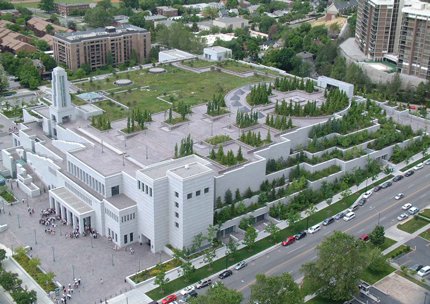Plant an Organic Living Roof Garden
Green roofing systems allow organic gardeners to create rooftop gardens on their homes or businesses. Learn about the plants and design to make this landscape possible.
When an organic gardener has exhausted every square inch of gardening space on his land, he may consider the green footprint that is now covered by a home, garage, or garden shed. A green roof allows the gardener to colonize this former dead zone.
Benefits of Living Roofs
- Green roofs lower energy costs.
- Living roofs lower temperatures in urban areas.
- Green roof systems help manage storm water, preventing runoff problems.
- Living roofs provide habitat to birds and pollinators.
- Green roofs reduce air pollutants.
- Living roofs provide urban gardeners a new green space to tend where land is scarce.
Green Roofing Materials
The number of vendors offering green roofing components is growing, so gardeners don’t need to rely on one supplier or manufacturer to achieve the green roof system they desire. Although the materials vary according to manufacturer and the structure, a living roof is comprised of six basic components, from underlying structure to plants:
Insulation: An optional part of the living roof, it increases the energy efficiency of the design.
Waterproof membrane and root barrier mat: This critical layer keeps the plants and moisture from undermining the structural deck beneath.
Storage cups: The architect may use these cups or a layer of pebbles to catch excess rainwater, where plants may absorb it later.
Filter fabric: This keeps small soil particles from clogging the storage cups.
Growing medium: Regular garden soil is too heavy for living roofs. It’s possible to customize a mix using 75% inorganic materials, like clay, mixed with 25% compost or humus.
Choosing Plants for a Green Roof
The best plants for a green roof are those that can tolerate drought, yet have shallow root systems. The plants must also have a high tolerance for drying winds, sun, and heat. Alpine plants, some wildflowers, and native grasses are examples of suitable green roof plants.
Yarrow, coreopsis, primrose, and golden rod are good flowering choices for living roofs. Living roof owners value sedum for their shallow root systems and drought tolerance. A green roof planted with switchgrass alternating with plantings of self-seeding cosmos is a pleasing combination. Generally, gardeners should avoid using any plant with a taproot, as there isn’t enough growing medium to support it.
Organic gardeners in urban areas may be interested in living roofs for their potential to yield a growing area that can support edible crops. Successful roof plants usually prefer poor soils, so fruits and vegetables won’t produce the same harvest as they would in the ground. However, herbs like rosemary, thyme, and sage are excellent green roof candidates.
Caring for a Living Roof
A living roof requires the same basic weeding and pruning as a conventional garden. If the living roof has an intensive planting, with a growing medium layer deeper than three inches, the roof is more likely to be colonized by weeds. Gardeners must weed carefully, as not to disturb the root barrier mat. Homeowners must also inspect drains and gutters on a regular basis to prevent clogs from plant debris.
Sources:
http://www.saic.edu/webspaces/greeninitiatives/greenroofs/images/GuidetoRooftopGardening_v2.pdf
http://www.greenroof.hrt.msu.edu/

"Best benefit of the green roof I found is its stormwater management ability that offers soft landscaping to reduce the risk of flooding by retaining large quantities of annual rainfall and reducing rainwater run-off. This is particularly useful within green roofs toronto schemes. The gush of water retained is dependent upon the depth of level used in the landscaping.
"